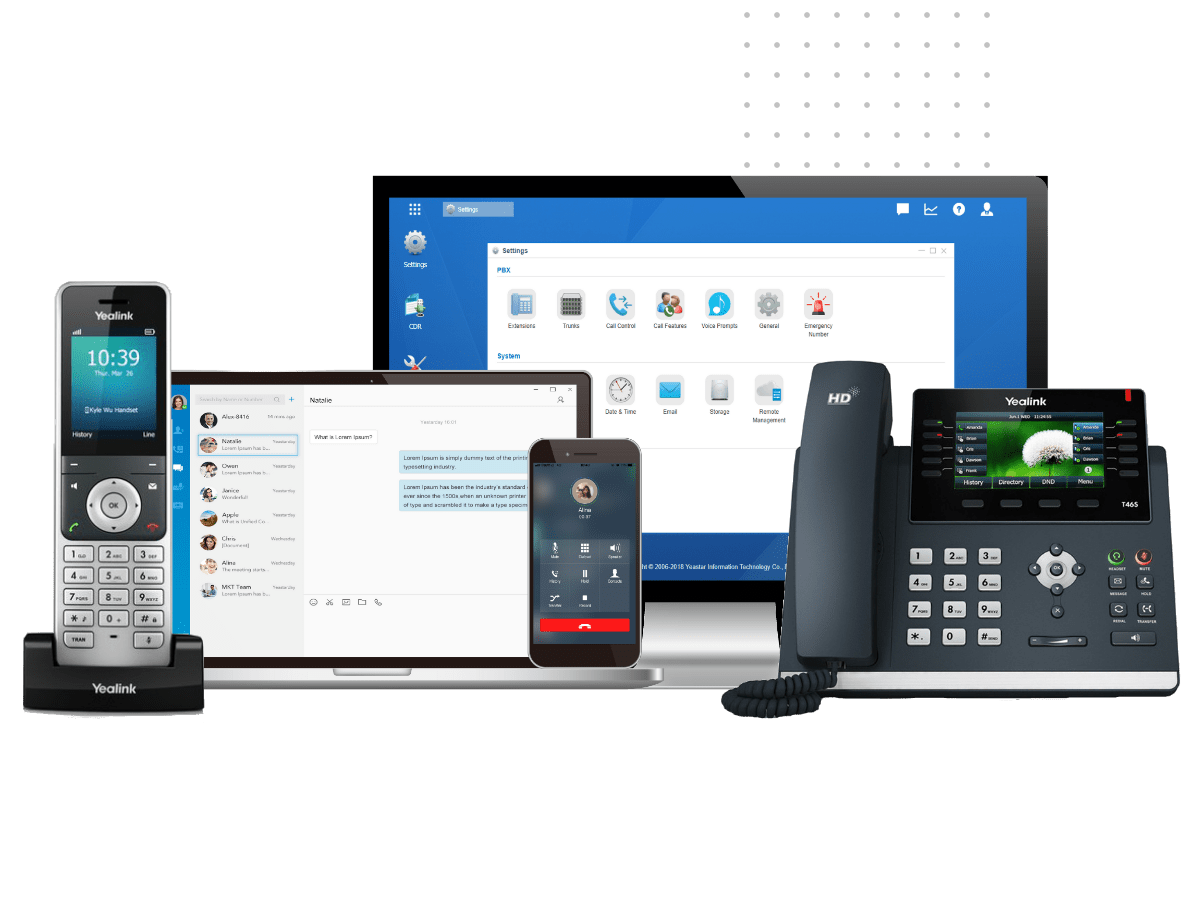

In today’s fast-paced work environment, flexibility isn’t just a luxury—it’s a necessity. Traditional desk phones tethered by wires no longer make sense for mobile teams, hybrid workforces, or growing SMEs. This is where Wireless VoIP (Voice over Internet Protocol) comes in, offering freedom, scalability, and clarity in communication.
Wireless VoIP is a phone system that lets users make and receive calls over Wi-Fi or mobile data networks, rather than through fixed-line internet or analogue phone systems. It’s a wireless extension of a VoIP phone system or Cloud PBX setup, allowing users to stay connected without being confined to a desk or physical location.
Before diving into the technical side, let’s break it down with a simple comparison.
Think of traditional phone systems as landline phones connected to telephone wires. You have to sit at your desk to answer calls, and every extension needs its own cable. Now imagine if those wires were replaced with Wi-Fi, and your phone could move freely around the office—just like a laptop or mobile phone. That’s essentially what Wireless VoIP does.
It’s not the same as Wi-Fi itself, but it works over Wi-Fi. It allows voice calls to be transmitted through your internet connection wirelessly, using devices that support either built-in Wi-Fi, DECT (a wireless standard for phones), or VoIP apps on mobile devices. There are no phone jacks, no tangled cords, and no need to be stuck at your desk.
It’s easy to confuse Wireless VoIP with just “Wi-Fi calling.” But here’s how they differ:
So, Wireless VoIP is powered by Wi-Fi, but it’s not just browsing the internet—it’s using the internet to make calls, usually with business-grade reliability and features.
Here’s what Wireless VoIP looks like in real life:
With Wireless VoIP, calls travel securely over the airwaves, just like video streaming or online gaming—but optimized for clear, lag-free voice quality.
This is especially useful in Singapore, where businesses operate across floors, malls, co-working spaces, and home offices. Wireless VoIP ensures they all stay connected—without ever plugging in a phone line.
Wireless VoIP uses the internet (via Wi-Fi or 4G/5G data) to transmit voice calls. Devices can include:
The voice data is transmitted in packets over a secure connection to a hosted PBX or VoIP provider’s server, which then routes the call to the intended destination.
Employees can move freely within the office, across multiple floors, or even work remotely without missing important calls.
No need for traditional cabling or additional fixed-line phone lines. Wireless VoIP can run on existing Wi-Fi infrastructure.
Perfect for pop-up offices, new branches, or teams working from co-working spaces. Simply connect to Wi-Fi and start calling.
Adding a new user is as easy as giving them access to the system and a device. No need to run cables or rearrange the network.
Wireless VoIP integrates with Cloud PBX systems and supports unified communication tools like video calls, messaging, and call forwarding.
Yes. When deployed with a reliable provider, wireless VoIP systems use encryption and secure protocols to protect call data. Regular network monitoring and proper device configuration are essential for maintaining security.
Yes. As long as your Wi-Fi is stable and secured, VoIP devices can connect and operate effectively.
Yes, using softphone apps or mobile VoIP services, your team can stay connected internationally via data networks or Wi-Fi.
VoIP is sensitive to poor connections. Use mesh Wi-Fi systems, QoS settings, or DECT systems for better reliability.
Not at all. Even small offices and startups benefit from the flexibility and lower setup cost of wireless VoIP.
Wireless VoIP gives businesses in Singapore the freedom to communicate without the limits of traditional phone systems. Whether you’re scaling up, moving fast, or managing a hybrid team, this wireless solution keeps you flexible, professional, and always connected.
Talk to Upon SG today to explore wireless VoIP options that match your business needs.





By now, you have probably heard about all the fantastic

Softphones bring a wealth of advantages to business communication, such

Please be informed that our office will be closed from

Please be informed that our office will be closed from
